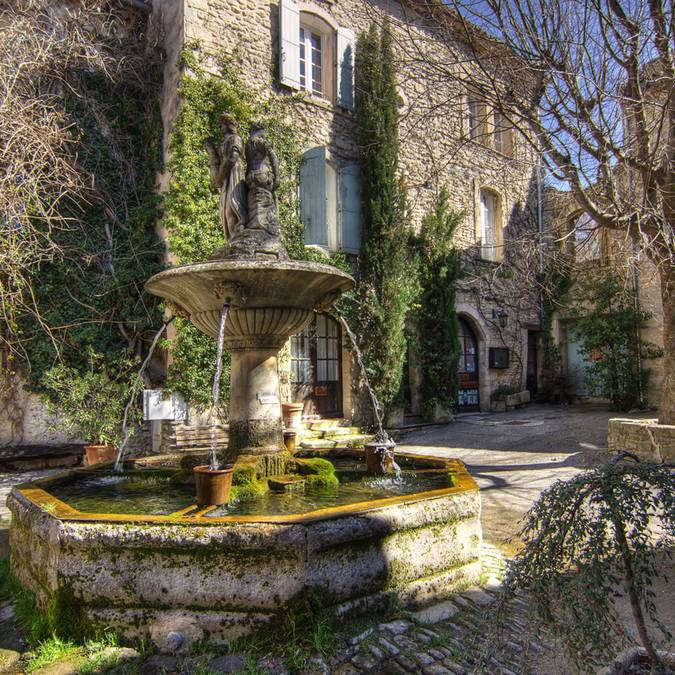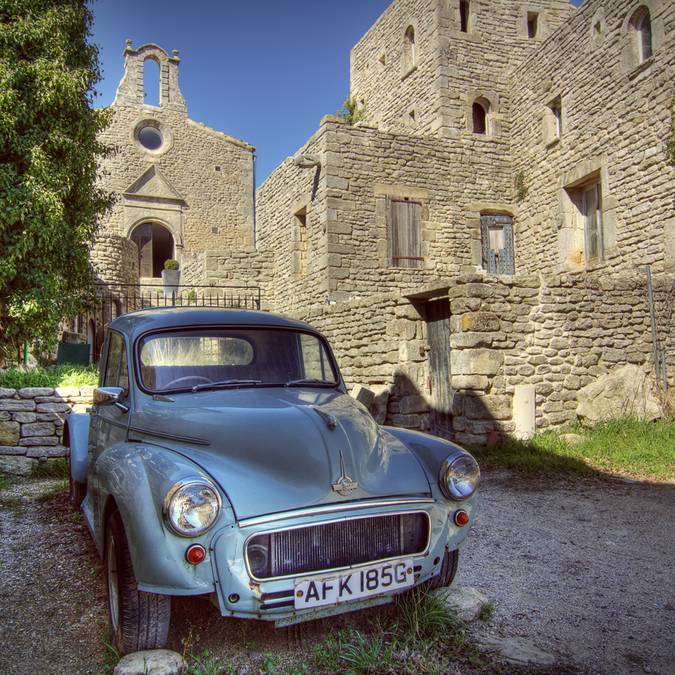This is the only place in Provence where you can find a rock called "Bellevue", and believe me it is very well earned!
Saignon attracts visitors from Apt Valley just 4 km away. From its heights, it seems to be guarding the Aptesians and the surrounding area. We can notice a very voluminous shape. A castle in Saignon?! No, more atypical still, it’s a fortified rock!
Nicknamed the Belle-Vue rock for as the name suggests, from this point, the magnificent view is really panoramic. It is possible to reach the top easely, by foot thanks to the restored steps. Moreover, this famous rock would be at the origin of the name given to the village.
For heritage enthusiasts, Saignon has a multitude of treasures you can see while strolling along the small steep streets and on the charming flower-filled squares and fountains.
Especially the famous square of the big fountain, which over the seasons never looses its charm: it seems that time has frozen in this very spot. In the Spring, you will love the green facades that surround it making this place idyllic and it is in the fall that it gives us a completely different show with its red, yellow and brown colors.
Pay attention too, to this fountain enhanced with allegorical sculptures in reference to agriculture and industry made by a local artist, Elzéar Sollier.
A pleasant point of freshness under the sun of Provence!
About treasures, do not miss and visit the “Potager d’un curieux”, a lover of the biodiversity who grows some strange or sometimes forgotten vegetables.
Saignon has everything to please and delight lovers of nature and heritage!
The history of the site occupation begins in the Middle Paleolithic
During Antiquity, the Gallo-Romans of Apta Julia built several villas and altars were dedicated to the gods. Already, the rock of Saignon, promontory about 30 meters high, was used as an observatory to issue alerts. From this use, "signum" has resulted in the name of Sagnio, the most probable etymology of the present name.
The first castrum was built in the 10th century on the rock, it was then replaced by 3 forts or castles, the key defense of Apt: Crugière (South), Mejean (in the middle) and Roche (North. Such a set built in such a small enclosure is rare. Part of the ramparts remains North side).
From the early Middle Ages, the Romanesque church of Notre Dame or Sainte Marie, of remarkable proportions, was a privileged pilgrimage for believers traveling to Rome on the Via Domitia or to Santiago de Compostela. On a wall of the church, an inscription attests the presence of Celts. The church also houses a reliquary of the Holy Cross.
From the 11th century, the Saint Eusebius abbey, founded by Saint Martian, prospered. It administered 21 priories and churches.
Saignon was the stronghold of the county of Forcalquier before the counts of Provence. During the 13th century, the 3 castles were the cause of a rivalry between the Lord and the Church of Apt. Bertrand-Rambaud de Simiane even took hold of the rock.
After the succession crisis in the county of Provence, the noble families of Provence supported René II of Lorraine whose troops settled in Apt and in Saignon. Louis XI repressed the revolt with an army of 18,000 men.
In the 17th century, Georges and Madeleine de Scudéry, "the great precious" whose Parisian salon received the greatest authors of their times, stayed at the castle of Valcroissant, neighbor of Saint Quentin which belonged to the Remerville.
In the plain, towards Saint Quentin, until the Second World War, a sulfur mine was exploited for vineyards. Agriculture always contributed to shaping the landscape (vines, cherry trees, cereals, lavender, very carefully monitored truffle oaks...). Lavender honey is sought after and local goat cheeses are tasty. A large ecological garden produces several hundred rare vegetables.










